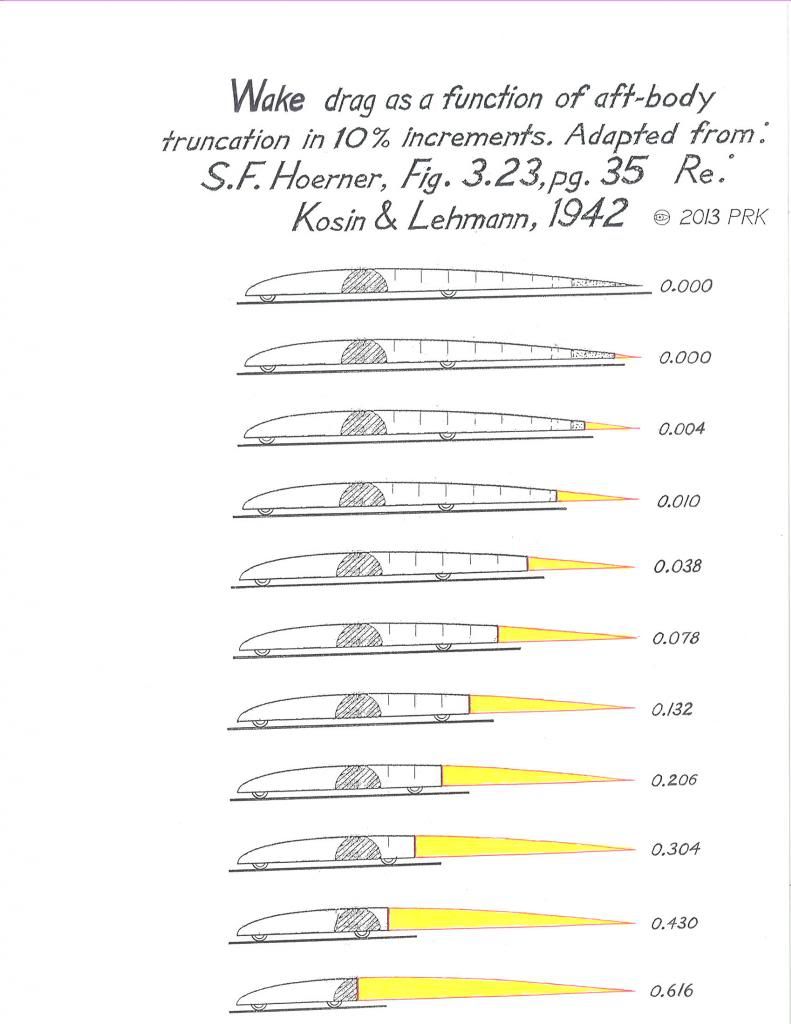Quote:
Originally Posted by NeilBlanchard

I wonder if there is already a term for this - a corollary to frontal area - the rear area that is beyond attached flow?
The ideal is obviously 0 - but minimizing this - whether it is taper on the top, sides, or bottom, is key to low drag.
Also balance is important - if the top is too tapered and the bottom is not tapered enough - this causes asymmetrical turbulence which overwhelms the trapped pocket of still air, that a Kamm back depends on to work.
|
*Theodor Von Karman referred to it as a 'vortex trail.'
*Mostly,it's referred to as wake turbulence.
*When carefully configured it can take the form of what Morelli calls the 'fluid tail.
*personally,I would qualify only those specific truncations which produce zero drag increase,as a 'fluid tail.'
Here,you can see that at a 20% truncation,the drag is already increasing

Here,I've converted the fuselage body of revolution to a half-body with wheels.I've assigned a drag coefficient to the wake itself

This is what Kamm was playing around with at the FKFS with Koenig-Fachsenfeld.Kamm thought that a truncation at 50% of frontal area was a good compromise for 'practical length.'
They clearly understood the 'ideal' nature of Jaray's pumpkin seed as far as drag went,but had to reconcile the length issue for day to day driving.
Koenig-Fachsenfeld's thought,was the extensible tail,deployed only on the highway

